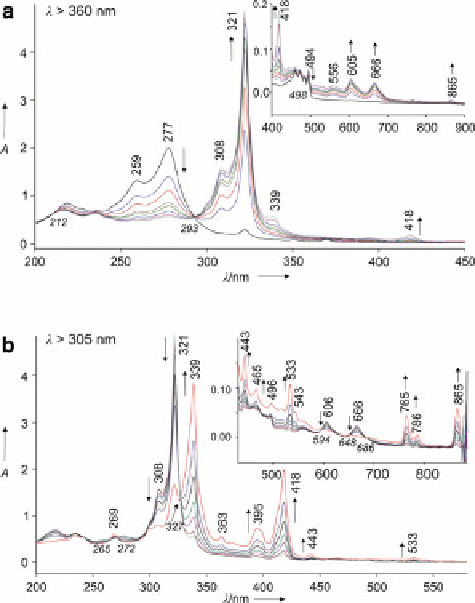Chemistry Reference
In-Depth Information
Fig. 29 UV/vis spectra showing the transformation of 67 into 9. The direction of
arrows
indicates
increasing or decreasing bands under the respective irradiation conditions. The values for isosbestic
points are given in
italics
.(a) Irradiation of 67 using visible light (
λ
>
360 nm) gives 68.
(b) Subsequent UV irradiation (
305-320 nm) results in the photogeneration of 9. The spectrum
in
red
was measured after irradiation overnight and was not used for determining isosbestic points
because the optical quality of the argon matrix deteriorates under these conditions resulting in
baseline shifts. Reprinted with permission from [
60
]. Copyright 2010 John Wiley and Sons
λ ¼
bands that were associated with nonacene, e.g., the
p
band at 865 nm and the
band
at 339 nm (Fig.
29b
). Finally, short wavelength irradiation using the output of a low
pressure mercury lamp (
ʲ
254 and 185 nm) produced the radical anion and
radical cation of nonacene (Fig.
30
) that is characterized by SOMO-1
λ ¼
SOMO
at longer wavelength than of any other acene studied under identical conditions.
Thus the photogeneration of nonacene can be summarized as shown in Fig.
31
[
60
].
!
4.2 Silylethynyl Substituted Nonacenes
Further significant progress was reported by the group of John Anthony in 2011
[
61
]. Purushothaman et al. [
61
] achieved the synthesis of the first crystalline
nonacene derivatives 70 by exploiting the stabilizing effect of four silylethynyl

